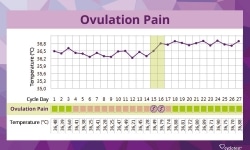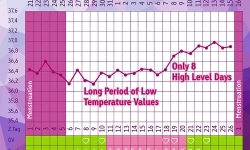Was Du auf dieser Seite findest:
What Causes Thrombosis?
Most of us think that mostly elder people are affected by thrombosis. However, developing thrombosis depends on various factors. Did you know that some people have an increased thrombosis tendency? This tendency is called thrombophilia and is either caused by a genetic mutation or can be acquired due to different factors. The instruction leaflet of the birth control pill indicates that women with a higher thrombosis risk or with a thrombosis tendency must not take the pill. In this article, you will find information on who is affected by an increased risk and how to reduce risk factors.
Inherited Thrombophilia
There is a genetic predisposition to develop thrombosis. The risk of suffering thrombosis is not the same in every woman. There are parts in the body, especially in the blood, which can either trigger or prevent the illness. A thrombosis tendency can develop if there are too many factors that promote a thrombosis or if there are not enough factors that prevent one. Some of these disorders are inherited.
APC Resistance or Factor V Leiden
There is genetic predisposition in 40% of thrombosis cases. In this context, it is important to know that there is a risk factor for thrombosis, which is responsible for 50% of all genetic thrombophilia cases, the so-called APC resistance, also known as factor V Leiden. It is caused by a gene mutation, i.e. mutated genetic material. 2 in 10 people are affected by this mutation classified as an inherited thrombophilia and therefore have a 5 to 10-fold increased risk of thrombosis.2
Two case studies concluded that women with heterozygous factor V Leiden who were on the contraceptive pill were 35 to 50 times more likely to suffer thrombosis than women who were not on the pill. There was a 100-fold increased risk for homozygous carriers.3
Prothrombin Mutation G20210A or Factor 2 Gene
Carriers of the factor 2 genes (about 2% of the German population) are 3 to 4 times more likely to develop thrombosis. In combination with an “acquired thrombophilia” e. g. by taking the birth control pill, the risk is significantly higher.2
Futher Genetic Risk Factors
Genetic deficiencies like protein C or protein S deficiency are far less common (in less than 10% of patients with a thrombosis). Some thrombosis patients also have a lack of an anticoagulant factor, called antithrombin III.4
Acquired Thrombotic Tendency
Apart from genetic forms of thrombophilia, there are acquired risk factors which were identified to be a possible cause of thrombosis.
Age
The risk of thrombosis rises with age. Women older than 34 are more likely to be at risk.5
Being Overweight
Being overweight was also a factor that raised the risk of thrombosis. A study showed that the risk was 10 times higher for women with a BMI of or higher than 25.6
According to data of many register studies, which investigated the connection between birth control pills with drospirenone and thrombosis, the number of overweight women that suffered thrombosis was elevated due to this type of pill. It is assumed that pills containing the ingredient drospirenone were more often prescribed to women with weight problems because the pharmaceutical industry used to promote their weight loss effect.7
Smoking
Smoking also increases the risk of thrombosis.6
Illnesses and Surgery
The cause for developing thrombosis can also be a changing blood coagulation due to a liver disease. After major surgeries you should also be cautious, because after being bedfast for a longer time, the blood flow in the veins is slowed down, thus increasing the risk as well.8 Women suffering from hypertension or diabetes are also more likely to develop thrombosis.5
Thrombophilia and the Contraceptive Pill
Women who are on the contraceptive pill belong to the group of acquired thrombophilia. A retrospective study on 155 women aged 15 to 49 concluded that the risk of thrombosis per 10,000 women’s years for women without genetic mutation who are not on the pill was 0.8. The figure for women without mutation but on the pill was 3.0. The risk for women with genetic mutation who were not on the pill was significantly higher – 5.7. If they were additionally taking the birth control pill, the figure was 28.5.9
The study shows exemplary that the risk of thrombosis doesn’t just add up, it multiplies. The guidelines of September 2010 by the Deutsche Gesellschaft für Gynäkologie und Geburtshilfe (German Society for Gynecology and Obstetrics) recommend to use alternative contraceptive methods if thromboembolism has occurred in other family members, if coagulation dysfunction was detected and also with advancing age.10
There was also a higher risk of thrombosis for women taking pills of the third and fourth generation compared to those of the second generation.10
Thrombophilia and Pregnancy
Pregnant women are generally at increased risk of thrombosis. For pregnant women with a thrombosis tendency, the risk is even higher. They are therefore advised to be monitored carefully by a doctor. The risk of a miscarriage is also raised. Thrombophilia might also trigger complications of unknown cause during a pregnancy.1
Diagnostics
The diagnosis of thrombophilia is usually performed by checking the medical history thoroughly. If you or a direct relative suffered thrombosis previously, especially under the age of 40, if you have an atypical localization (i.e. not in your legs but e.g. in your arm etc.) or if you suffered several miscarriages, you should be particularly careful.1
If you are genetically at risk or already developed thrombosis, it would be best if you got your blood parameter measured for a complete diagnosis in order to be able to assess the risk. The basic thrombophilia check-up involves measuring protein activities. When an increased activity can be detected, the amount of the respective protein is measured, too.1
Thrombosis Risk and Prevention for Women
Studies have shown that the risk is significantly higher for women with genetic or acquired thrombophilia and are further raised when on the contraceptive pill. The occurrence of thrombosis and pulmonary embolism could be reduced if women with thrombophilia were not prescribed hormonal contraceptives.5 However, research concluded that a thrombophilia screening for all women could not be implemented in a cost-effective way.11
If the family history or laboratory tests indicated an elevated thrombosis tendency, alternative methods like natural contraception should be considered. The fertility monitor cyclotest myWay can assist you if you are looking for a natural way to prevent a pregnancy.
Conclusion
The report reveals that many patients who developed thrombosis and were on the pill already belonged to a high-risk group before taking hormones. There are acquired risk factors like smoking and inherited forms of thrombophilia like a genetic disease and coagulation dysfunction. Taking the pill is an acquired risk. In combination with further risk factors, the risk multiplies. Thus, it is important to get possible risk factors checked by a doctor in advance and to implement a risk-benefit analysis.
In its guidelines the German Society for Gynecology and Obstetrics recommends that women with thrombophilia should not be prescribed hormonal contraceptives. You should opt for an alternative contraceptive method if you or a family member suffered thromboembolism in the past, if a coagulation dysfunction was detected or with advancing age. Natural contraception does not affect the body’s natural processes and is reliable if used correctly. If you are currently using a hormonal contraceptive and would like to switch to a hormonfree method, you can find useful information on coming off the pill in our advice section.
Sources:
1 Kaufmann, M. et al.: Die Gynäkologie. 3rd edition. Berlin 2013.
2 De Stefano et al.: The risk of recurrent deep venous thrombosis among heterozygous carriers of both factor V Leiden and the G20210A prothrombin mutation. N Engl J Med. Vol. 341. 1999.
3 Martinelli, I.: Risk factors in venous thromboembolism. Thromb Haemost, Vol. 86. 2001.
4 Römer, T.: Kontrazeption mit OC in 160 Problemsituationen. 2nd edition. Berlin. 2012.
5 Pötzsch, B. und Madlener, K.: Hämostaseologie: Grundlagen, Diagnostik und Therapie. Heidelberg. 2009.
6 Abdollahi, M. et al.: Obesity: risk of venous thrombosis and the interaction with coagulation factor levels and oral contraceptive use. Thromb Haemost. Vol. 89. 2003.
7 Wegner, K.: Die Pille und ich: Vom Symbol der sexuellen Befreiung zur Lifestyle-Droge. Munich. 2015.
8 Fisch-Börold, C.: Venenleiden: Visite-Gesundheitsbibliothek. Magdeburg. 2008.
9 Vandenbroucke et al.: Increased risk of venous thrombosis in oral-contraceptive users who are carriers of factor V Leiden Mutation. Lance. Vol. 344. 1994.
10 Boeschen, D. et al.: Pillenreport 2015 – Ein Statusbericht zu oralen Kontrazeptiva, Bremen 2015.
11 Wu et al.: Thromb Haemost. Oral contraceptives, hormone replacement therapy, thrombophilias and risk of venous thromboembolism: a systematic review. Vol. 94. 2005.




